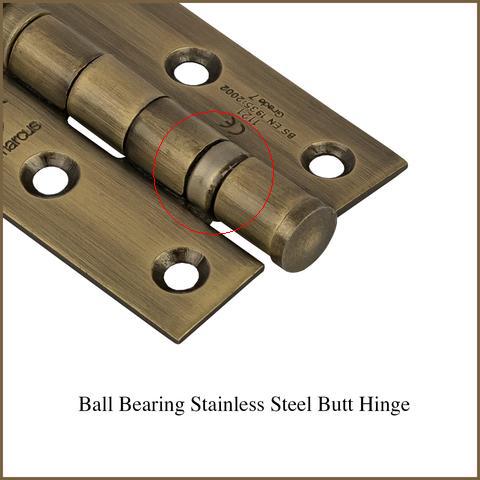I've been unable to find a clear explanation of the design principle behind a ball bearing door hinge.
In the image below, the casing for a ball bearing assembly is highlighted.
One description states:
Ball bearings are engineered to throw the knuckle weight against specially hardened steel raceways, which ride on the bearing surfaces. The one-piece cup protects the bearings from moisture and dust.
Can anyone clarify what this means, and the internal layout of the assembly?
I'm also wondering about their durability, given that the mechanism isn't solid metal, but has internal (presumably moving) components under the casing. How thick is the casing, and does it carry all of the vertical load, or is the load shared with the internal components?



